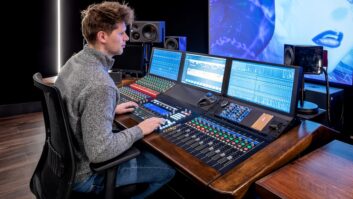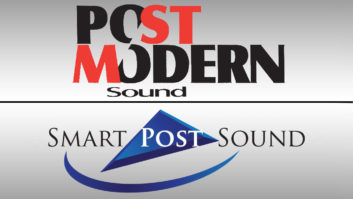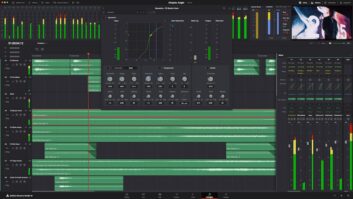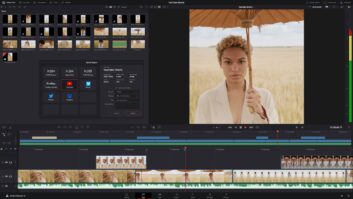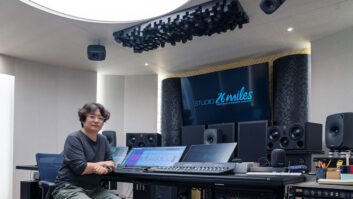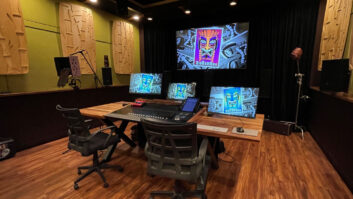Fremont, CA – June 16, 2023 – Blackmagic Design today announced that the new documentary “Bad Like Brooklyn Dancehall” used DaVinci Resolve Studio for editing, grading and visual effects (VFX). Director Ben DiGiacomo credits the software’s end to end approach to post production with his ability to be more intentional and meet tight deadlines without sacrificing creativity for the vibrant film, which is premiering at the 2023 Tribeca Film Festival.
“Bad Like Brooklyn Dancehall” celebrates the Jamaican dancehall scene that reverberated across Brooklyn in the 1980s and 1990s and how its music and cultural impact are still influencing today’s younger generation. The documentary is executive produced by Grammy award winning singer and songwriter Shaggy and features notable artists such as Sean Paul, Ding Dong and more.
Ben noted that the film celebrates a culture that has been long overdue for acknowledgement despite having a major impact on pop culture. It needed to incorporate historical archival footage spanning decades and be just as vibrant and entertaining as dancehall culture is in real life.
“To properly do that, I needed time, but there’s always a rush toward picture lock, so the film can be handed off to color and to mix,” Ben explained. “Using Resolve as an end to end post solution from the beginning was a luxury for us, as we were able to have access to our entire film at any moment and constantly evolve all elements of the project artistically. Without that flexibility, I don’t think it would have come out as the intentional piece that it is.”
As editor, colorist and VFX artist on the project, Ben wanted to get in the edit room early, especially as documentaries require a lot of long takes. “After processing dailies, I made all my selects while the shoot was still fresh in my memory. I based my editing decisions on color, and I needed a quick way to match exposure and white balance while making selects, especially for the documentary’s uncontrolled environments. Having all those balanced selects ready to go allowed me to stay focused on editing without being visually distracted,” he explained.
“I found Resolve’s cut page very helpful when making selects,” Ben added. “Sometimes we really focus on a single clip and having a clean UI gives that feeling of special attention. I also don’t think I could log without the source tape viewer anymore. It’s very simple but immediately gives you a good sense of all the material you’re working with.”
Ben also relied heavily on DaVinci Resolve Studio’s grouping framework and render caching abilities during editing. “Node groups, clip filters and shared nodes are a huge help in the editing process for feature length projects. I always create tons of smart filters that allow me to watch it down in different contexts, for example watching all the archival clips back to back. It’s a great way to have a bird’s eye view of the project,” he explained. “I also love how the render cache pipeline works, since I oftentimes move back and forth between the pages while editing.”
“Using adjustment clips really speeds up the editing process while trying different things out like reframing, effects, looks, dynamic zooms or all of that combined,” he added. “I can quickly see how a shot would feel without having to touch the inspector. It’s fun with VFX, and I then drop them in a power bin to keep them handy.”
While Ben regularly turns to DaVinci Resolve Studio’s Fusion page for his commercial work, he dove even deeper into the VFX tools for “Bad Like Brooklyn Dancehall.” “Our entire intro credit sequence was built in Fusion using a large amount of Resolve FX, such as lens distortion, lens blur, lens reflections, color compressor, watercolor, and film grain,” he said.
“I also used character level styling to build all the title animations in Fusion, but on separate clips. When I originally built the template, I pushed some of the Fusion node parameters, like text and position, through with user controls, so I was able to change the names and positions from the edit page directly, which is quite efficient when constantly moving and editing dozens of titles,” he continued. “Like DaVinci Resolve, Fusion’s power comes from taking a comprehensive approach, just with compositing, 3D and motion graphics; it really brings them together.”
With a background in music, sound is extremely important to Ben. “I put a lot of work into sound while editing so having a dedicated Fairlight audio page in Resolve with filmmakers in mind is a big asset. Sound needs special attention, and it’s hard to achieve this level of finesse with any other NLE,” he said.
“Documentaries can be challenging to grade due to the uncontrolled environments. Exposure and temperature will shift, and DaVinci Resolve’s color stabilizer and color warper helped fix these issues without needing complex keyframing,” explained Ben. “Additionally, archival footage usually has damage that time has done to the film or tape. Resolve’s analog damage allowed me to match these subtle but very characteristic details quite easily with just a few adjustments.”
“I’m quite picky about how I want things to feel and look,” he concluded. “Even deep into color I might want to tweak a cut or a lower third, or a cold sound effect might influence how warm I’d like to push the look of a shot, and vice versa. I like all these decisions to be evolving together to create the perfect emotion, and DaVinci Resolve gave me that flexibility for ‘Bad Like Brooklyn Dancehall.’”
Press Photography
Product photos of DaVinci Resolve Studio and all other Blackmagic Design products are available at www.blackmagicdesign.com/media/images
About Blackmagic Design
Blackmagic Design creates the world’s highest quality video editing products, digital film cameras, color correctors, video converters, video monitoring, routers, live production switchers, disk recorders, waveform monitors and real time film scanners for the feature film, post production and television broadcast industries. Blackmagic Design’s DeckLink capture cards launched a revolution in quality and affordability in post production, while the company’s Emmy™ award winning DaVinci color correction products have dominated the television and film industry since 1984. Blackmagic Design continues ground breaking innovations including 6G-SDI and 12G-SDI products and stereoscopic 3D and Ultra HD workflows. Founded by world leading post production editors and engineers, Blackmagic Design has offices in the USA, UK, Japan, Singapore and Australia. For more information, please go to www.blackmagicdesign.com
